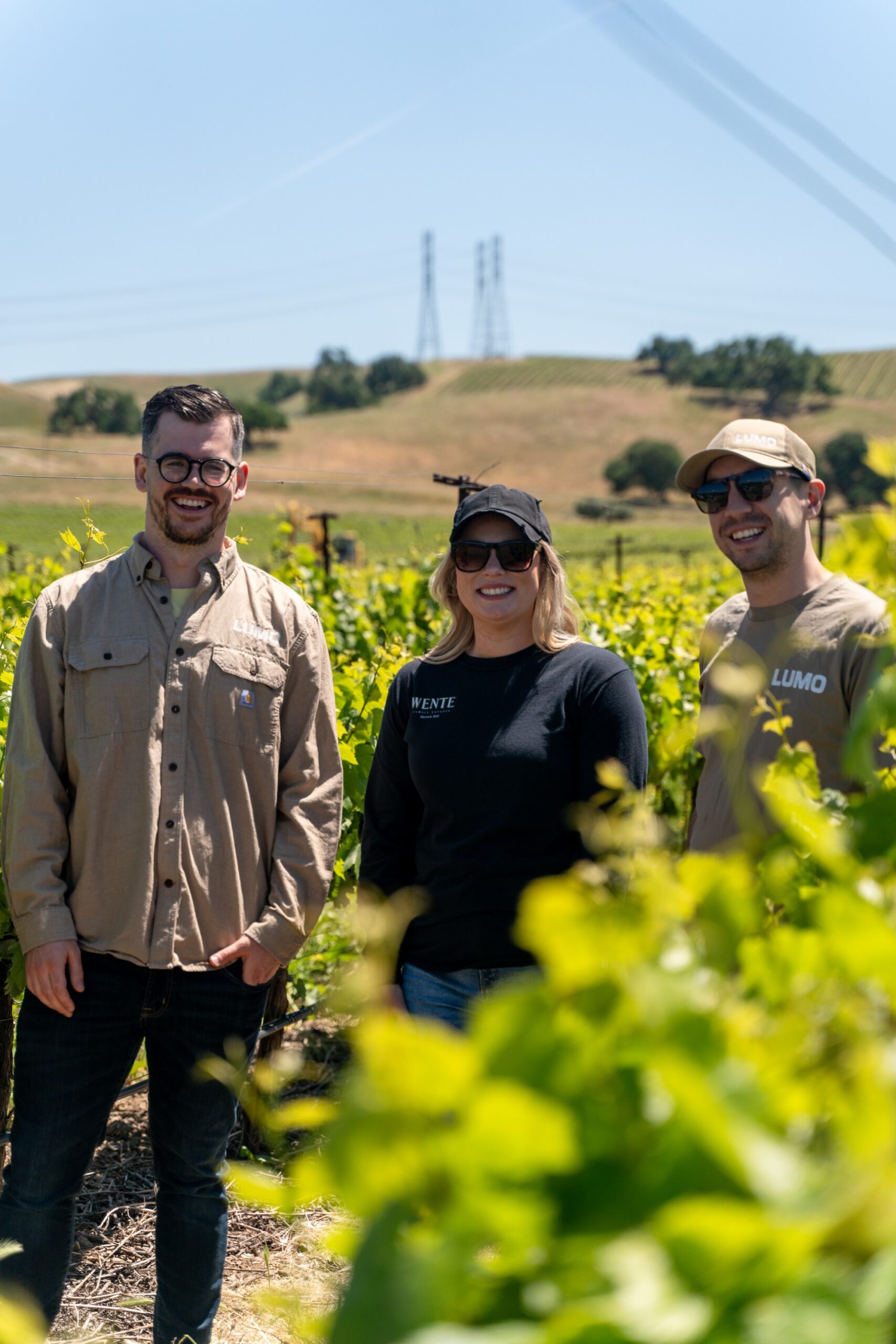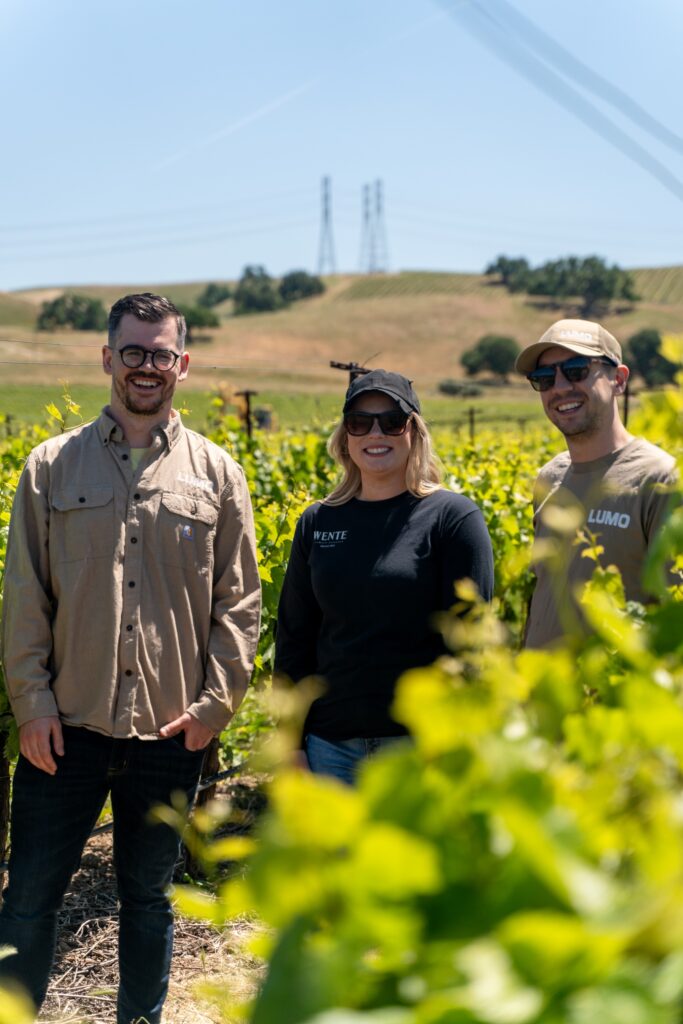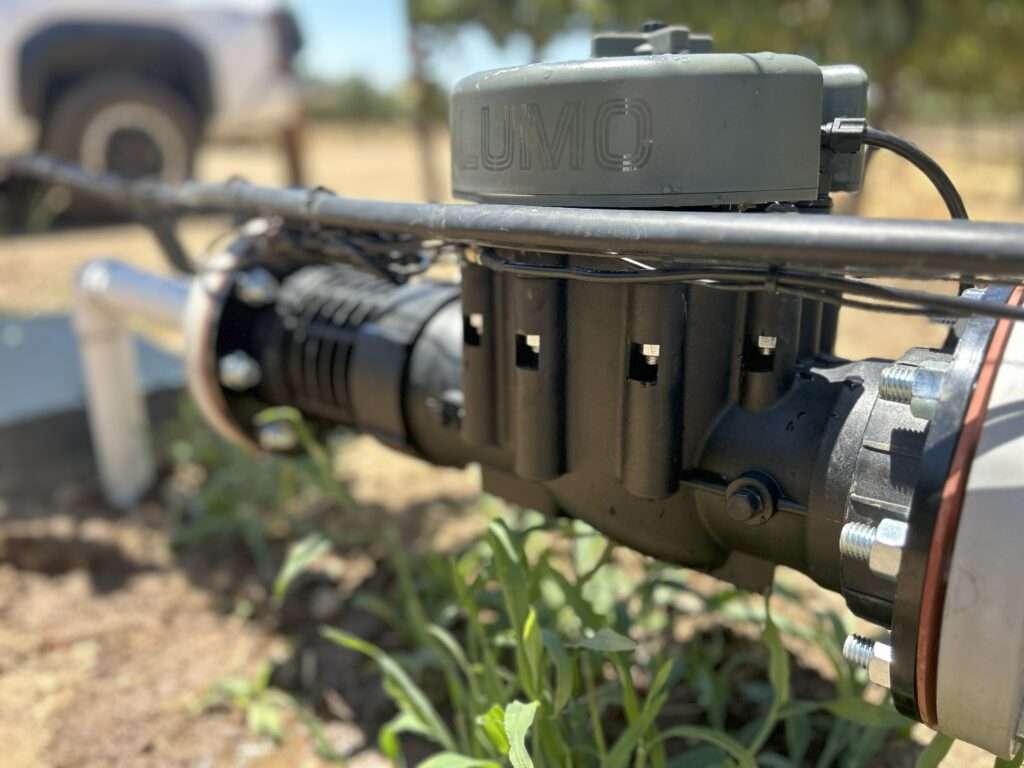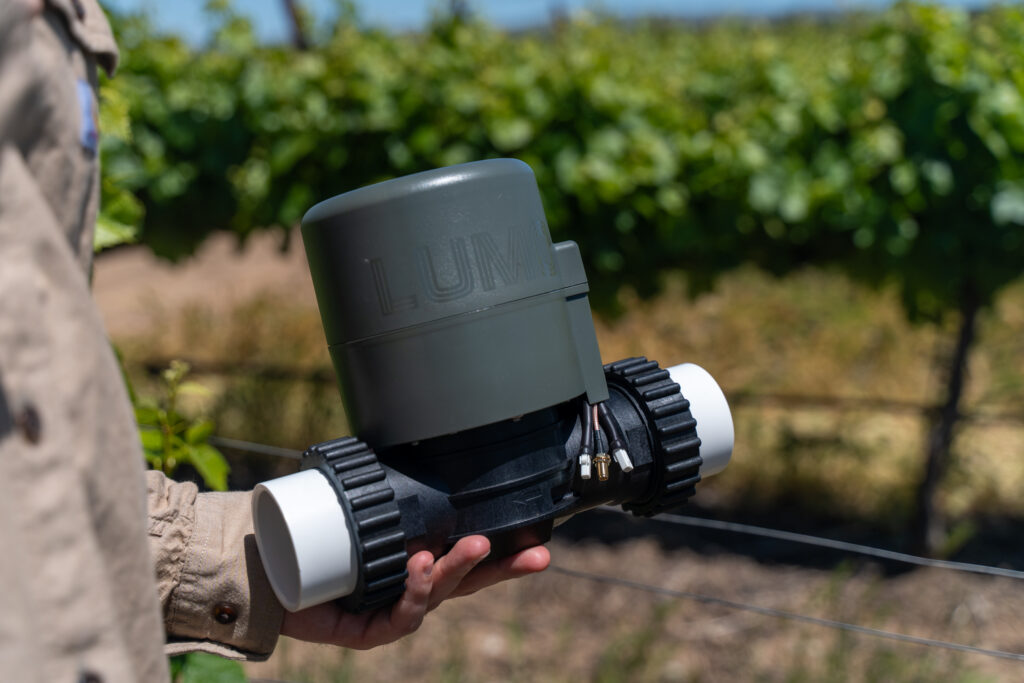
Marketing 101: How to sell your agtech to farmers
Jun 27 2025


Steele Roddick is the Senior Digital Marketing Manager at US-based precision irrigation company, Lumo. While Lumo is yet to expand into the Australian market, the company’s story is one that many have experienced, and others have dreamed of. Mr Roddick has been with the organisation for over a year and has watched as the company and product has grown over time. This Company Advice article explores the lessons he learned about marketing the company’s product to producers in California, USA.
“The trajectory has been amazing to see, and we’re just getting started,” says Mr Roddick. “I’d like to think I’ve learned a thing or two about what good agtech marketing looks like along the way. From personal experience and everything I’ve seen firsthand, from reading and listening to every agtech podcast I could get my hands on, and from speaking directly with agtech marketers who are also figuring out how to accelerate adoption.”

Start with marketing
Lots of tech companies start with engineering. They build a product first, then hire salespeople to go sell it. Then, when those salespeople come back with requests because the product isn’t quite what prospects are after, they hire a product team. Then, when they get complaints about the product not working as intended, they hire a customer success team. And finally, once they’ve accumulated technical debt from building the wrong thing and sales debt from selling to folks who fit poorly, only then do they hire a marketing team to try to figure out how to actually achieve scalable growth. More often than not, marketing comes last. It’s completely backward.
At Lumo, Devon Wright and Bennett Fitzgibbon started with marketing. They talked to dozens of growers before they had any product to show them. They went and worked in the field, asked questions about what had been tried in the past, where previous solutions had fallen short, what a solution would need to achieve to provide value and fill the gaps. Those early conversations planted the seeds of Lumo’s future growth. They are the reason we’ve been able to find product-market fit and scale so rapidly. Because we’ve been building something the market needed from the beginning.
And our customers continue to pull the product out of us to this day, requesting features that they know they’ll use and will compound on the value they’ve already begun to realize.
Define marketing broadly
The second thing I think is really important is not to pigeonhole marketing. Some people think of marketing as a synonym for advertising, or they think it’s all about pretty branding, or pure lead generation. Either way, they define it narrowly, and incorrectly in my view. Marketing is about how you show up in the marketplace. Product. Price. Place. Promotion.
On paper, our marketing team at Lumo is small. But in truth, almost everyone at the company plays a role, from our CEO to our field staff. All of the functions contribute to how Lumo shows up in the market. We’re all engaged in building relationships, in educating prospects and customers about our solution and the value it provides, in gathering feedback on our product and our positioning. It’s an integrated, whole-team effort that creates a sum far greater than its parts. Our marketing effort has been successful because it has not been siloed in a single department.
Driving density matters most
In agtech, you want as many customers in as tight of a geographic area as possible. At Lumo, we focused on vineyards in Napa and Sonoma to start. There are two reasons density is so important: word-of-mouth and in-field support. Growers buy from growers. They want to see your product working in the field, ideally at a ranch that’s run by someone they already know and trust. They want to hear what they have to say, how the experience has been, where they’re seeing ROI. The more customers you’re able to win over in one area, the easier it will be to host field events, and the faster the word will spread.
And secondly, showing up to support your product is essential, especially in the early days. There are going to be kinks to iron out in the beginning—growers know that. And in our experience, they’ll be patient and understanding, so long as it’s clear that you’re on top of the issues, making improvements, and ensuring minimal interruption to their farming operations.
The more concentrated your geographic footprint is, the better positioned you’ll be to support your product in a way that’s not cost prohibitive. Spreading yourself across too large of a region too quickly is a recipe for bad customer experience and bleeding money.
Provide ROI information
Margins are thin in agriculture, so your product needs to provide hard returns. Real cost savings, real increases in crop quality and yield, or ideally both. The challenge, however, is that these numbers aren’t easy to get in the beginning and are even harder to get other farmers to believe. Most growers have been promised bigger yields too many times to count. And most of those promises have never been fulfilled.
Plus, growers know that there’s a ton of variability from season to season and much of it is outside anyone’s control. Those large, uncontrollable factors are likely to swamp any improvements that could be attributed solely to your solution. Impact is tough to tease out. As a result, when you throw out a hard ROI number, scepticisms is going to be high, and rightfully so.
But with all that said, in my experience, growers have an intuition about the impact and are happy to share what they believe it to be. My approach has been to faithfully relay these accounts, even if they’re not super scientifically rigorous, especially because—in the case of Lumo—the mechanisms are straightforward and easy to grasp.
That’s also where the second piece of the equation comes in—doing a good job of talking about the qualitative stuff. Lots of farm managers are excited about our products because it makes their lives easier. It’s a ‘felt’ difference. And even if it’s hard to quantify on paper, that feeling matters. It’s material. They know it’s driven by an improvement in operational efficiency, in time savings, and in greater control and visibility.

Find a unique way to describe your impact
The other way to successfully walk the ROI tightrope and prevent yourself from drowning in the sea of sameness is to figure out a way to describe the impact your product has in a novel way. At Lumo, we talk about helping growers Close the Execution Gap and achieve block-level irrigation precision. Talking about it this way makes it easier to quantify (we can show the improvements in precision that growers are able to achieve with our block-level flow and pressure data) and makes the value straightforward to understand (growers know that if they have a greater ability to irrigate to plan that they’re going to grow better crops than they otherwise would have).
Tell more than one value story
The list of challenges in ag are long: labour shortages, water scarcity, regulatory burden, high input costs, disease pressure, and on and on. But the market is not monolithic. Different growers experience these challenges to different degrees. At Lumo, some growers are almost exclusively focused on using automation to help relieve their labour challenges, for others, it’s more about better managing their water resources and being in a position to easily comply with regulation. Other growers are far more focused on increasing precision to improve their crop outcomes. You need to find a way to be flexible and tell multiple value stories at once.
Deliver on sustainability and profitability
The environment and the bottom line are both important, and you can’t just deliver on one or the other. It’s a both/and, not an either/or. At Lumo, we help growers manage their water better. Catch leaks faster. Irrigate overnight to reduce evaporative loss. Save on fuel with fewer trips out to the ranch just to turn valves. We help growers operate more sustainably and be better stewards of their natural resources. But more often than not, at least in the California ag market, environmental and sustainability concerns take a backseat to business and profitability considerations. Over time, we’ve focused more on improving irrigator productivity, increasing yields, reducing pumping costs, and eliminating risks, because those concerns have been more top of mind, especially given the tough economic conditions of late. We’re still very much on a mission to massively improve the efficiency of freshwater usage in agriculture, but we now more firmly understand that that mission depends on our ability to improve the business fundamentals of the farmers we serve. Sustainability and profitability must work hand in glove.
Build a valuable data set
Much of Lumo’s success has rested on the fact that having block-level data on every irrigation is incredibly valuable to farmers. They can dial in precision. Perform targeted maintenance. Rest easy knowing they don’t have some catastrophic leak they’re unaware of or that they’re not unknowingly severely under-irrigating their new vines due to poor pump performance. The data is an absolute goldmine, not just more noise, because it leads to action, a difference in practice. Faster leak detection. Faster troubleshooting. Optimised set planning that translates to real increases in precision and performance.
Avoid the “Agtech Homework Problem“
One of the issues with giving farmers more data is that it’s time-consuming to look through. Time that farm managers rarely have to spend, and frankly, time they don’t want to spend at a desk. At Lumo, we’re squarely focused on reducing time to value. We’re figuring out how to use AI to surface insights and make them immediately accessible through a simple chat or even text message interface. No combing through charts and graphs or tables of information. No learning how to navigate a new complicated software system. Just data that can be acted on in seconds.
Farmers can easily succumb to “agtech fatigue.” Heck, we all do. Learning another digital tool is the last thing I want to do right now. To be successful in agtech, you need to find a way to solve the homework problem. If you’re relying on growers to spend hours to get to value, it’s just not going to happen.

Your tech needs to work
This should go without saying, but at the end of the day, all of your marketing success is going to come down to whether your product actually works. And in ag in particular, the word “works” has an extremely robust definition. Works means many things, such as:
- Your product is reliable, day in and day out, outside, on the farm, in rugged conditions.
- It does what you say it’s going to do and delivers on the promises your marketing made. If you’re going to use buzzwords, you’d better be able to back them up.
- The farmer can trust that what they see on their phone is an accurate representation of what’s happening in the field.
- It doesn’t have downtime at the worst times, that either you or the farmer can support the product in the field and that it doesn’t get in the way of farm operations, especially during critical times like a massive heat wave or harvest.
- It’s better than what they were doing before by a wide margin and from an all-things-considered, systemic perspective. Tangible time and cost savings. Measurable improvements to crop quality and yield.
At the end of the day, if I had to give a single reason why we’ve been successful with marketing at Lumo, why we’ve been able to scale to well over 100+ ranches in a little over three years, why we’ve seen such strong traction and pull from the market, it really is simple. It’s because our product works.
Posted in Company Advice
You Might Also Like
Aug 21 2025
What farmers want: How to design decision support systems
As an academic who specialises in the human side of agtech adoption, Tom Lee has his favourite research papers. In this Company Advice article, Lee, a Senior Lecturer at the Faculty of…
Read MoreAug 11 2023
NFF Australian Farm Data Code
Calling all AgTechs that are collecting, managing, or sharing, farm data! Australian farmers are demanding more transparency and control over how their farm data is managed. In response, the National Farmers’ Federation…
Read MoreList your company on AgTech Finder.
AgTech Finder helps Australian Farmers and producers find the product that’s right for them.
Register now to be a part of the community, get access to a national platform and start gaining insights to improve your products.
